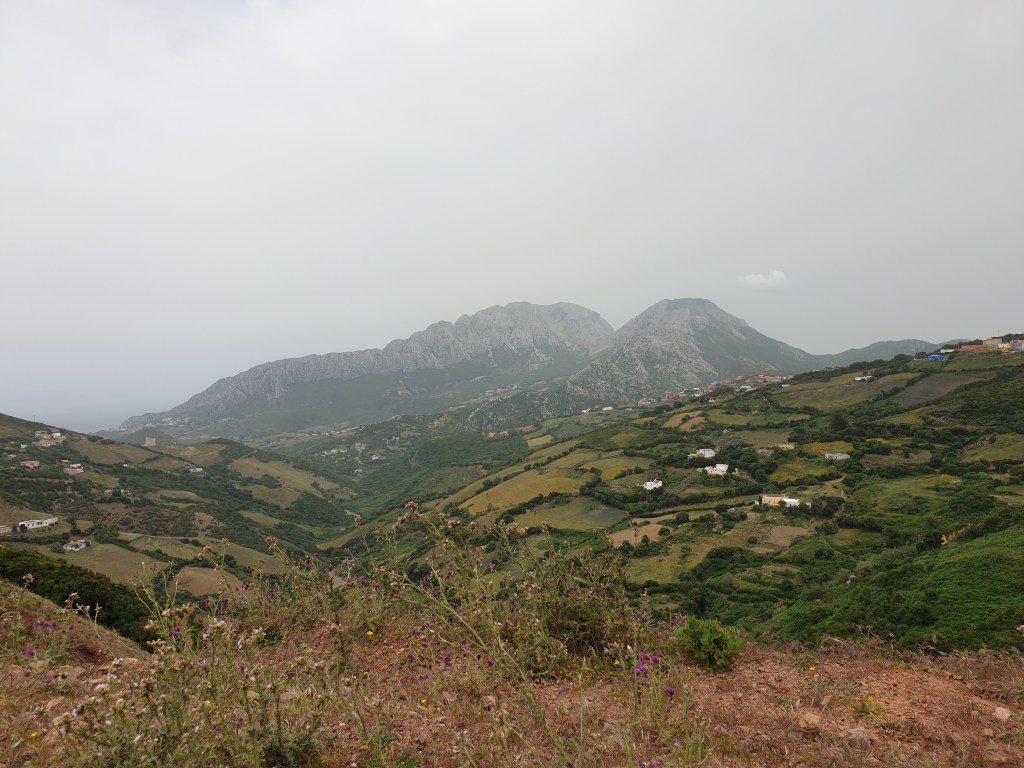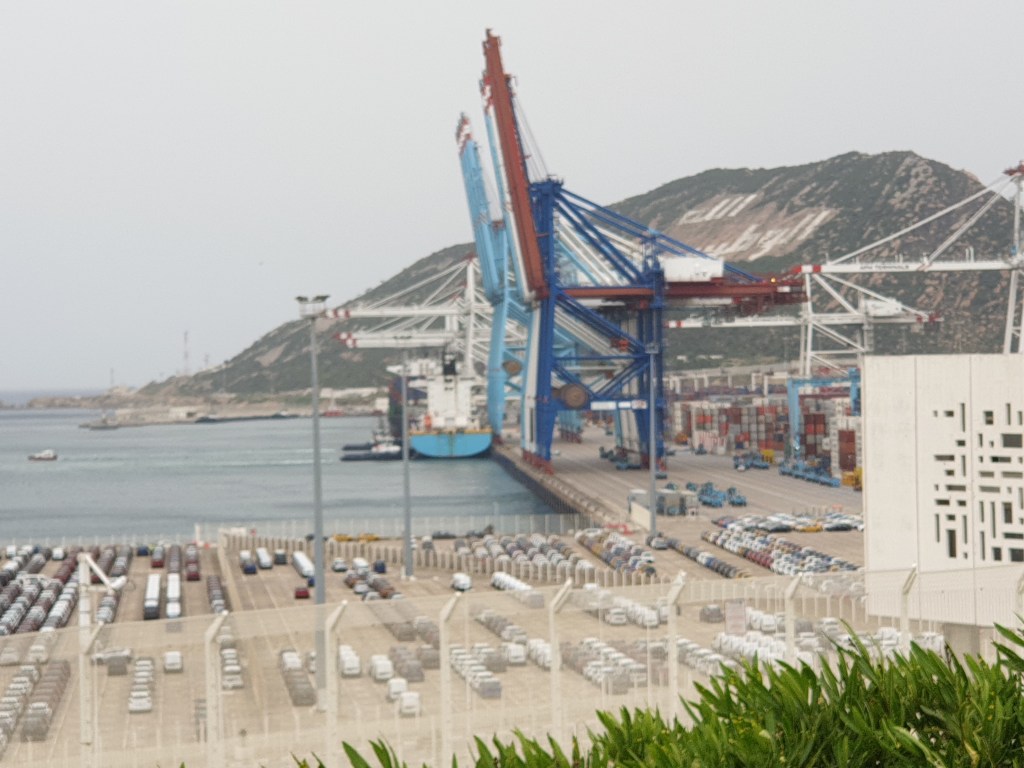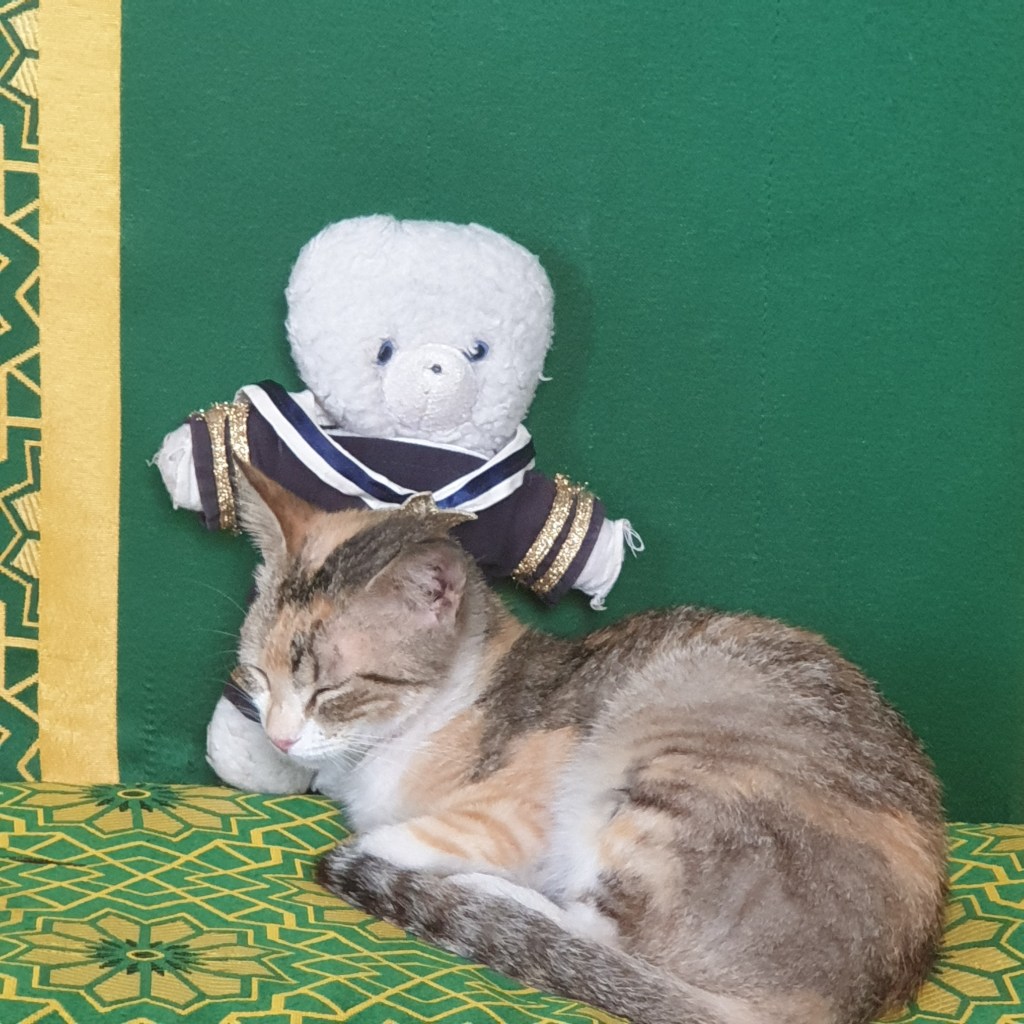The start of this morning was uncomfortable, with frequent trips to the toilet. I sat on the terrace of my room, enjoying the view, and planning the day. As check out time approached, my tummy felt better, and I decided I could risk a longer scenic drive to get to Tangier. First, I drove to Ceuta, one of a few small pieces of Spanish territory in Morocco. I didn’t have time for the lengthy formalities to enter but got a good view of the city from the road which skirted around it. For the first time since I arrived in Morocco, the weather was cloudy, and with a strong breeze blowing it was quite cold.

From Ceuta, the road rose steeply into the mountains, and gave a great view of Jebel Musa, one of the ancient pillars of Hercules, which features in Roman mythology.

…..and then descended back to the coast to Tanger Med, Africa’s biggest port. It was a huge facility and still being expanded, but it proved hard to take photographs that give a true impression of its massive size.

The road continued along the coast passing some pretty beaches and rolling hills before I arrived in Tanger and returned my hire car. I was very pleased to have successfully made it without hitting any cars/people/donkeys/goats/dogs and adding more dents and scratches to the large collection my car already had.
I immediately liked Tangier. The stretch I had driven along to reach the centre was very modern, whilst the area around my Riad was typical of old Moroccan city centres. My riad was run by a French lady, and like most of the other places I had stayed, excellent. It was conveniently located right next to the main gate to the Kasbah, itself housed within Tangier’s medina.
Tangier has a long and turbulent history due to its strategic location on the Straits of The Gibraltar (the entrance to the Mediterranean Sea). It was first settled by Greeks and Phoenicians, then became capital of a Roman province, then changed hands between Vandals, Berbers, Arabs, the Portuguese, the British and then returning to Moroccan Arabs. In the 19th Century the colonial powers retook Tangier and in 1912 created the International Zone, sharing the strategic city between nine western countries. Between this date and Moroccan independence many expatriates came to live in Tangier, including artists, adventurers and exiles. After independence, Tangier went into decline and gained a reputation for drug dealing and other criminality. However, Tangier was recently given a huge facelift by the government, which included lots of new buildings and relocating the port 40km to the east and is now a very pleasant city.
I was a bit tired after my restless night and the long drive, so I spent the rest of the afternoon strolling around the medina. This had received a successful makeover and lots of new paint as part of Tangier’s overall renovation, and since donkeys no longer provide the transport here, it is very clean. Whilst Fes’ medina is dark and mysterious, Chefchaouen’s is blue, and Moulay Idriss’ is poor and dirty, Tangier’s medina recalls Matisse’s painting from his time living here – bright white walls, with house doors and windows providing splashes of bright blue, green or yellow.

I stumbled upon a strange tea house where people were playing live music. Signs announced them as the “Fils du Détroit” (the “Sons of the Strait [of Gibraltar]” ) who played Arabo-Andalusian music. I sat happily in the courtyard outside, drinking mint tea, before venturing in to meet the musicians…….

……and a new friend.

For dinner I chose a vegetable tagine in one of the popular restaurants at the medina entrance. It was a good choice, and I enjoyed a good night’s sleep without tummy problems.
Leave a comment